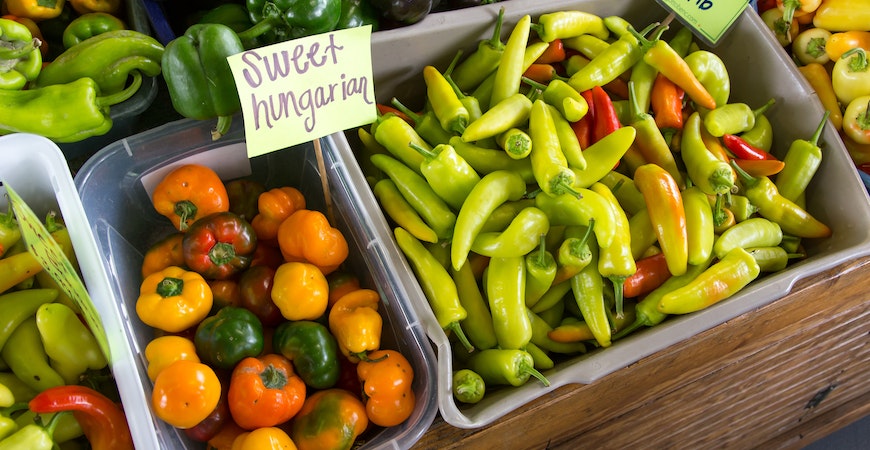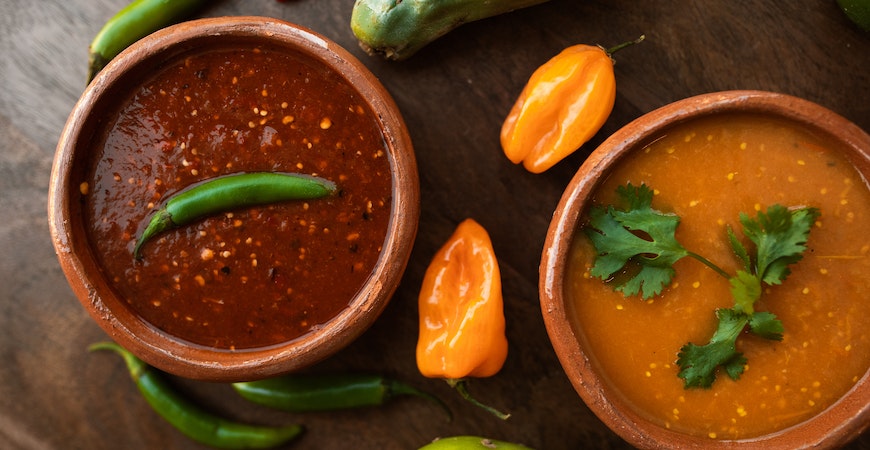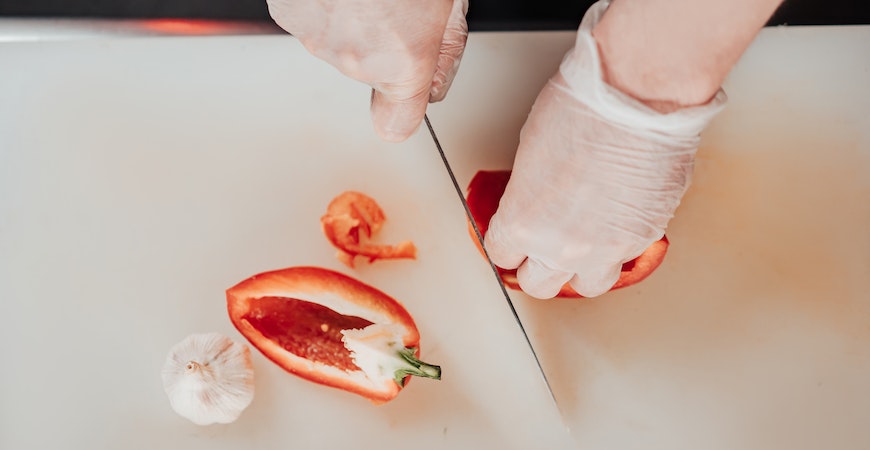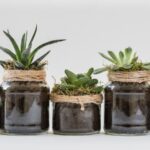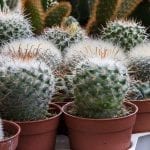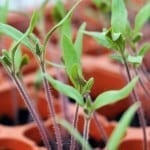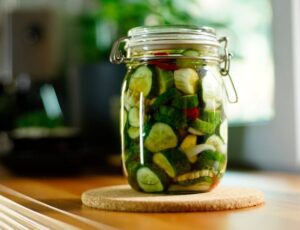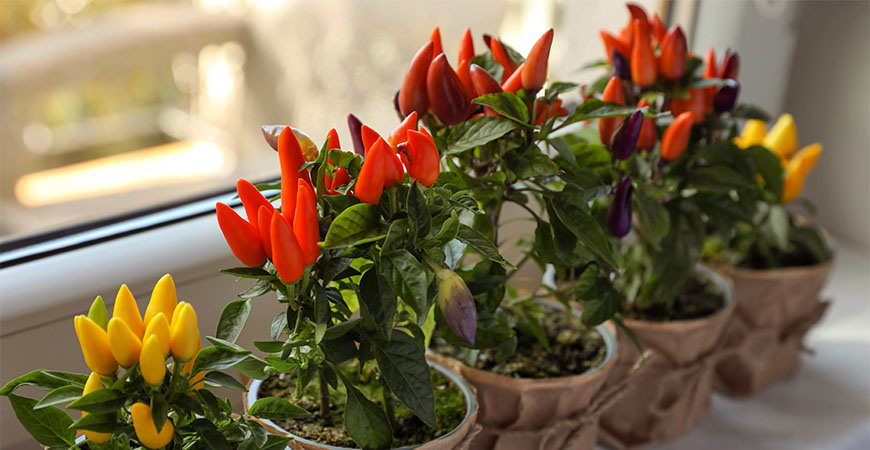
Spice Up Your Garden With Indoor Pepper Plants
You don’t have to be a heat fiend to appreciate a pepper. With their burst of color, fragrance, and spice, these plants please the senses regardless of whether you prefer peppers hot or sweet.
And, sure, some people prefer indoor pepper plants because their home lacks the outdoor space or ideal weather conditions for a thriving pot. But the honest truth is that any home can benefit from a peppery addition to its indoor garden.
So, let’s take a look at some of our favorite pepper plants to grow indoors, easy-to-follow care tips, and even a recipe or two for people of all heat tolerances.
Small Pepper Plants to Grow Indoors
You probably noticed we didn’t title this section “Pepper Plants of All Sizes to Grow Indoors.” That’s because while peppers of all sizes can thrive indoors if given enough space, smaller peppers tend to do betters when removed from the outdoors.
Now, for the heat-averse, this can come as bad news. The general rule of thumb regarding how much of a punch a pepper packs is to look at its size.
So, yes, smaller pepper plants do tend to be hotter. However, sweeter varieties, such as bell peppers, can still thrive indoors, but they’ll grow to a size much smaller than the enormous ones you find at the supermarket.
With that in mind, here are five of our favorite indoor pepper plants (and where they place on the Scoville scale):
- Bulgarian carrot peppers (17,500 Scoville Heat Units) look like tiny versions of their vegetable namesake with their bright orange exterior, but they pack a much spicier kick. Due to their origins, they can also be grown in cooler climates than other peppers.
- Goat horn peppers (20,000 SHU) can grow up to six inches in length with a waxy red or green exterior. The plant itself is short, typically reaching a height of two to three feet, and can be used ornamentally.
- Habaneros (225,00 SHU) are small and berry-shaped with brown, red, green, or orange skin. They are known to be fairly easy to grow, though with an extended germination process.
- Jalapenos (5,250 SHU) are perhaps the most common “spicy” pepper, but it pales compared to others on this list. These peppers grow long, thick pods that turn from green to red as they ripen.
- Poblanos (1,250 SHU) grow longer and broader than jalapenos but are typically less hot. As a result, they may not reach their full sizes indoors. However, they’ll maintain the same flavor that makes them a popular choice in many Mexican dishes.
Growing Pepper Plants Indoors
Pepper plants originate from somewhere in Central or South America. So they’re used to lots of sunlight and high temperatures.
Of course, many would prefer to keep their homes at different temperatures than Central American farms in the middle of summer. And because peppers are now grown worldwide, each variety has its sunlight, temperature, and humidity needs.
That means it’s essential to follow the care instructions for your specific pepper plant than relying on one-size-fits-all advice.
Still, all peppers remain united in their love of sunlight and higher temperatures. So, some rules of thumb should work regardless of the variety.
For instance, put pepper plants in the south- or west-facing windows. This will allow them to have ample opportunities to soak up the sun, preferably around 10 to 12 hours when plants are first growing. Buying a grow light can also help if there’s not enough window space available.
Additionally, try to keep temperatures up. Most indoor pepper plants prefer temperatures that hover around 80 degrees Fahrenheit during the day, with a slight dip to 70 at night.
That will be hard to maintain, but your plant should prosper if you can keep things within 10 to 20 degrees on either side of those targets. Heat pads or, again, grow lights can help if you find temperatures consistently plunging below those marks.
Generally, try watering your pepper plants twice a week. When they’re first growing, be sure to give the soil enough time to dry out before watering again. Overwatering can attract pests like aphis or fungus gnats.
To keep the environment humid enough when starting from seedlings, put a layer of plastic wrap on top of the pot. It will create a mini-greenhouse, trapping moisture against the soil.
Recipes for Indoor Pepper Plants
Some peppers will add fruit notes to a dish. Others will bring the heat or a touch of earthiness.
There’s hardly a recipe out there that couldn’t benefit from a pepper, but, of course, it’s always better to start with a lighter touch before moving on to bigger and bolder amounts.
Peppers are classic contributors to sauces, marinades, and salsas. You can roast, saute, or stuff them with cheese and deep fry them.
So, when it comes down to picking a peck of peppered recipes, it’s hard to make a concise list that still shows off the diverse culinary repertoire of the plant pod.
With that in mind, here are some of our favorite ways to prepare peppers.
- Bulgarian pepper bread
- Chile rellenos (with poblanos)
- Habanero hot sauce
- Pickled goat horn peppers
- Roasted tomatillo salsa (with jalapenos)
While we enjoy these recipes and think you will, too, it’s also important to experiment.
A chopped, roasted poblano can spice up an otherwise ordinary cheeseburger. A diced, fresh jalapeno or habanero could be that kick you’re looking for in your next sauce or dip.
And if you’re looking to up your pepper game but are still trying to limit your exposure to heat, there are a couple of precautions you can take.
First, wear gloves when cutting peppers. They will protect your hands from the potentially painful chemical compounds found in peppers. Also, make sure to take off your gloves before touching your face or going to the bathroom.
When chopping, try to remove as many seeds or as much of the inner white membrane of the pepper as possible. Much of the pepper’s punch is stored there, and keeping them out of your recipe can help limit the heat.
Spice Up Your Indoor Garden With Pepper Plants
Indoor pepper plants are an easy way to add zest to your home or your meals. Even if you can’t take the heat, they’re still a great addition to your kitchen or any other room in your home.
For more gardening tips all year round, keep coming back to AskWetandForget.com!

